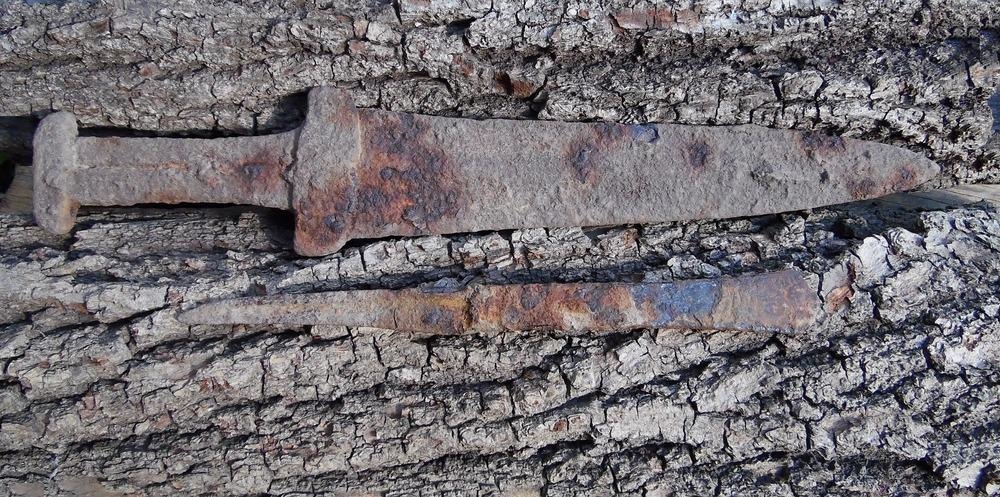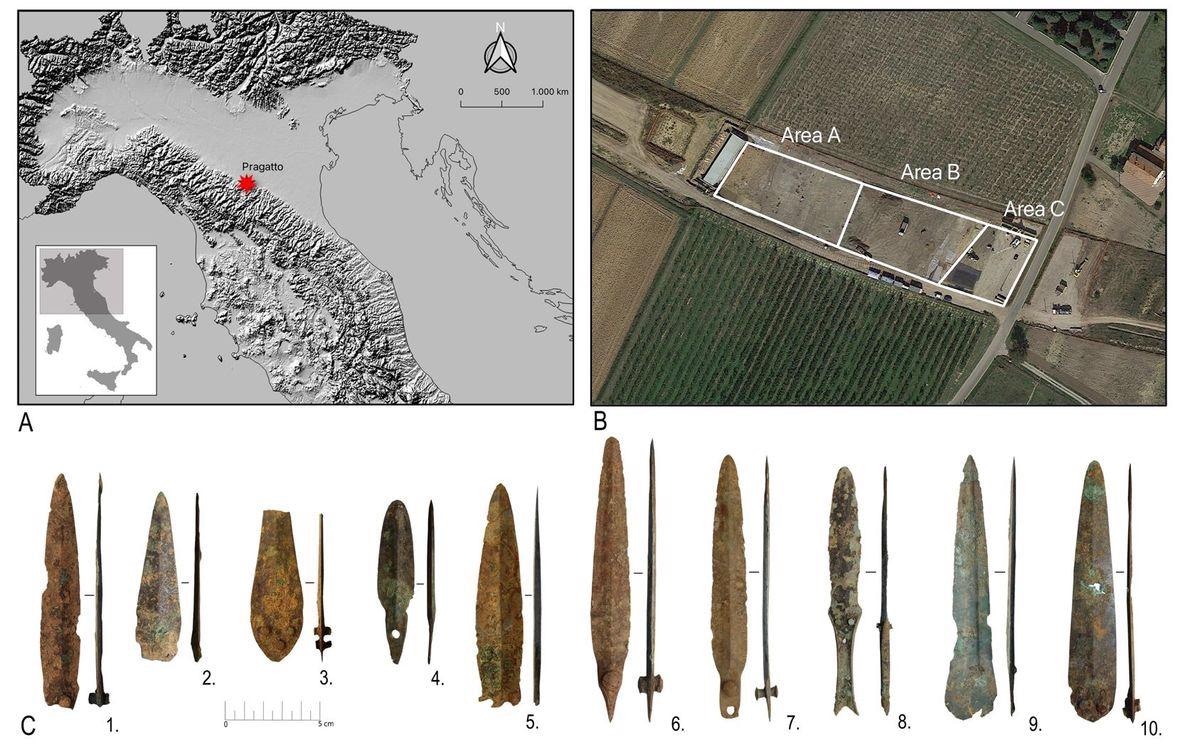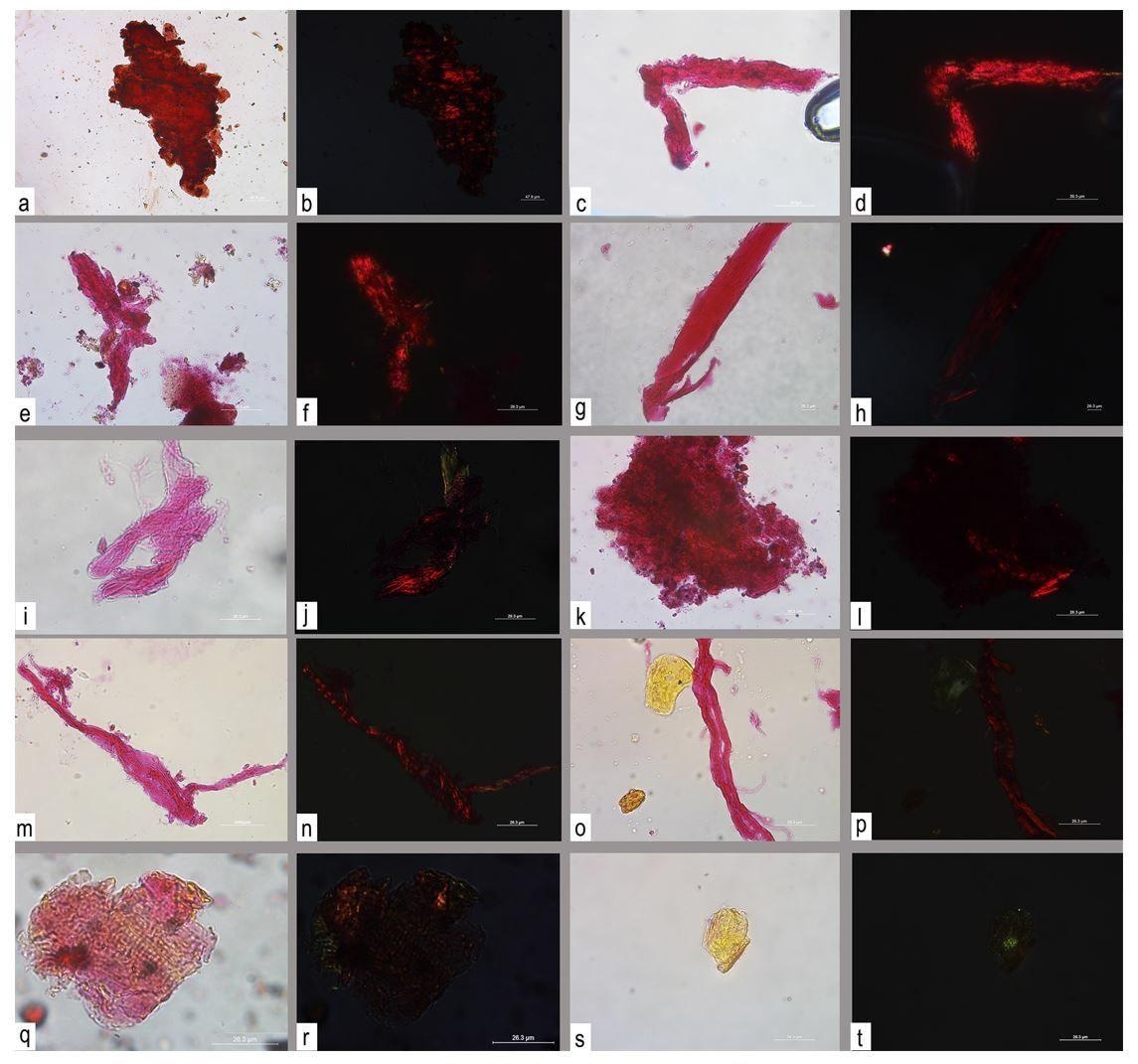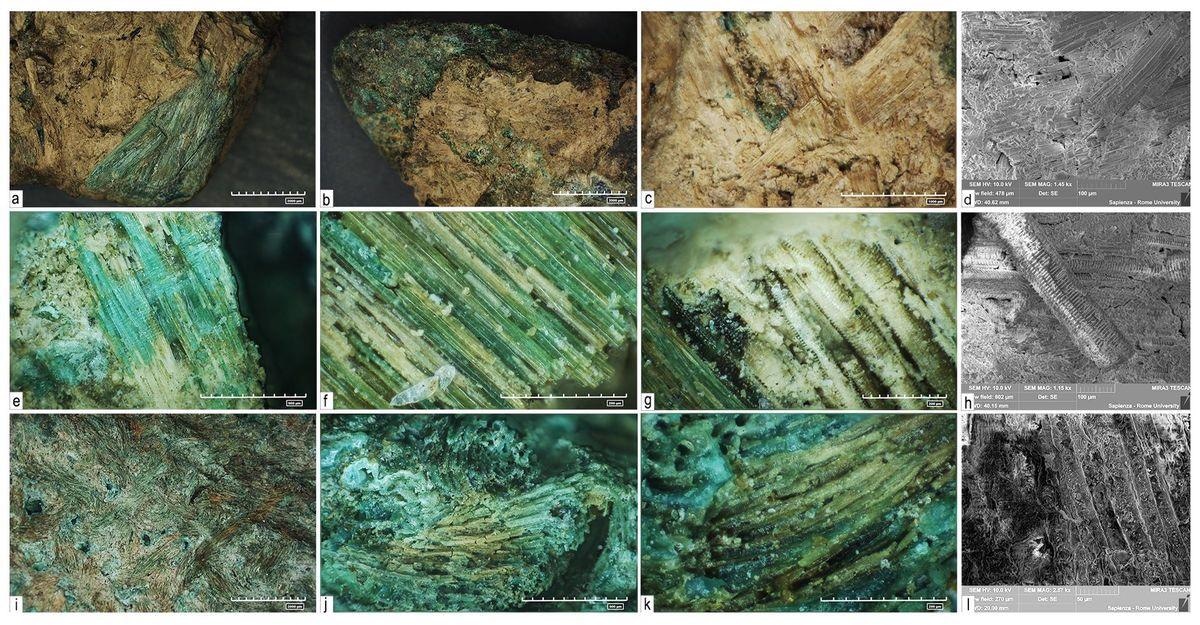A new study posted to the preprint* server Research Square, in submission to the journal Scientific Reports, has presented organic residue analysis of ten Bronze Age daggers from archaeological digs at Pragatto, Italy.

Study: Organic Residue Analysis Reveals the Function of Bronze Age Metal Daggers. Image Credit: Dzuba Pavel/Shutterstock.com
Revealing how everyday objects were used helps us to learn about the everyday lives of our ancestors. Daggers, for example, have been used by humans for millennia and they are found all over the world in archaeological digs. However, their social and practical roles are still the subject of debate.
Ancient Daggers – Ceremonial or Practical Objects?
Daggers are found across prehistoric sites, yet despite their ubiquity, they remain poorly understood artifacts. In the early 4th millennium BCE, they appear near-simultaneously across a large geographic area, from eastern/central Europe to the Italian peninsula and the Alps. The earliest examples of daggers from these locations were constructed of flint or copper (first alloyed with arsenic, and later with tin,) depending on what resources were available and cultural preferences.

1A: Site location; 1B: Aerial view of the site highlighting excavation areas A, B and C (source: Google Earth); 1C: Copper-alloy daggers analyzed as part of the research. Specimen 1) no 1617; 2) no 2037; 3) no 175; 4) no 1707; 5) no 2041; 6) no 1798; 7) no 2035; 8) no 1683; 9) no 1321;10) no 264. Image Credit: Caricola, I et al., Research Square
By the early 2nd millennium BCE, daggers were being produced and traded between Crete, Scandinavia, Ireland, and the Russian steppes. Gradually, due to the increasing exchange of materials and more sophisticated technology, flint daggers were replaced by metal variants, which continued to be used throughout the Bronze Age.
It was long believed that early metal daggers were merely ceremonial objects and non-functional insignia of male identity, status, and power. This was due to the perceived weakness in the composition of alloys and the manufacturing and design of daggers. However, recent research has demonstrated that this is not the case.
Pioneering metalwork analysis has been performed in several studies to reveal new insights into the practical, everyday uses of daggers in Chalcolithic and Bronze Age Europe. 55 Early Bronze Age daggers from Britain were examined by Wall. Their research indicated protracted use, repairs, and curation of daggers were commonplace.
Other studies by Dolfini and Iaia and Dolfini on 15 Bronze Age daggers from Italy revealed high rates of edge sharpening and minor edge damage. It was suggested by the authors that this was due to contact with soft materials such as animal tissue. Moreover, it has been widely observed that size reduction of daggers due to repeated upkeep and sharpening was commonplace in prehistoric times, indicating prolonged practical use of these important objects.

Archaeological residues observed in transmitted and cross-polarized light with staining compound PSR. a-b) clumps of bone flakes with an angular outline; b-f) amorphous compact residues with a rough/cratered surface and peripheral crystalline fragments; g-h) tissue with longitudinal grooves; i-p) bundles of fiber; q-r) parallel reticula of fiber; s-t) amorphous matter. Image Credit: Caricola, I et al., Research Square
Using Organic Residue Analysis to Elucidate Information on Early Dagger Function
However, these studies, whilst they help elucidate information about early daggers, are not conclusive due to their narrow chronological and regional samples. Usewear analysis, even if it is employed for larger samples and assemblages, cannot adequately answer the broad questions of early dagger function. It is limited by the high corrosion of objects, certain uses not leaving discernible traces, and the non-specificity of some of the traces.
Organic residue analysis can help to elucidate information about the function of objects by examining the residues trapped in their corroded surface or by their imprints. This can reveal the substances that the object has been in contact with. Whilst these techniques have been applied widely to shell, stone, and ceramic artifacts, to date there is a distinct lack of research applying this analysis to copper-alloy weapons and tools.
The Study
The authors behind the pre-print study have applied organic residue analysis from ten copper-alloy daggers excavated in archaeological digs at Praggato, a Bronze Age domestic site in Northern Italy. This site was excavated in 2016-2017 and is part of the larger Terramare settlement system in the Middle and Late Bronze Age (c. 1650-1200 BCE.) Controlled excavations were carried out over an area of 6,900 sqm.

Figure 3. Residues observed on the copper-alloy daggers from Pragatto, interpreted as remnants of sheaths. a-h) specimen no 2037 observed with an RH-Hirox digital microscope displays intertwined plant fibers interpreted as cfr. Alnus; (h) SEM imaging (MIRA3 by Tescan) of sample no 2037 highlights details of xylem plant cells and water conducting tissues; i-l) specimen no 1707 observed with an RH-Hirox digital microscope displays residues of non-determined fur fibers; l) details of the negative cast of the animal fur residues as observed with a SEM microscope (MIRA3 by Tescan). Image Credit: Caricola, I et al., Research Square
The daggers selected for the research were from areas A and B of the dig, which corresponded to the southern portion of the village. Two daggers were chosen from area A, and eight from area B. The samples contained broad ranges of morphologies, hafting arrangements, and lengths.
A novel application of biochemical staining and SEM-EDX analysis was performed on the samples to extract and identify animal tissue including muscle, bone, and tendon. The results were validated by experiments with replica daggers. Residues found on the cutting edge of the daggers were interpreted as evidence for ancient butchery and carving. Further residues were observed on the hafting plates, tangs, and blade faces, which were interpreted as remnants of bone handles and sheaths (which were typically made of hide, fur, or wood fibers.)
The findings of the study indicated that Bronze Age metal daggers were used as fully functional tools, and potentially tool-weapons, primarily used for the butchery and carving of animal carcasses. Thus, the research has shed new light on these under-studied but socially salient prehistoric objects.
*Important Notice
Research Square publishes preliminary scientific reports that are not peer-reviewed and, therefore, should not be regarded as conclusive, guide clinical practice/health-related behavior, or treated as established information.
Further Reading
Caricola, I et al. (2022) Organic Residue Analysis Reveals the Function of Bronze Age Metal Daggers [online] Scientific Reports [pre-print] researchsquare.com. Available at: https://www.researchsquare.com/article/rs-1258246/v1
Disclaimer: The views expressed here are those of the author expressed in their private capacity and do not necessarily represent the views of AZoM.com Limited T/A AZoNetwork the owner and operator of this website. This disclaimer forms part of the Terms and conditions of use of this website.